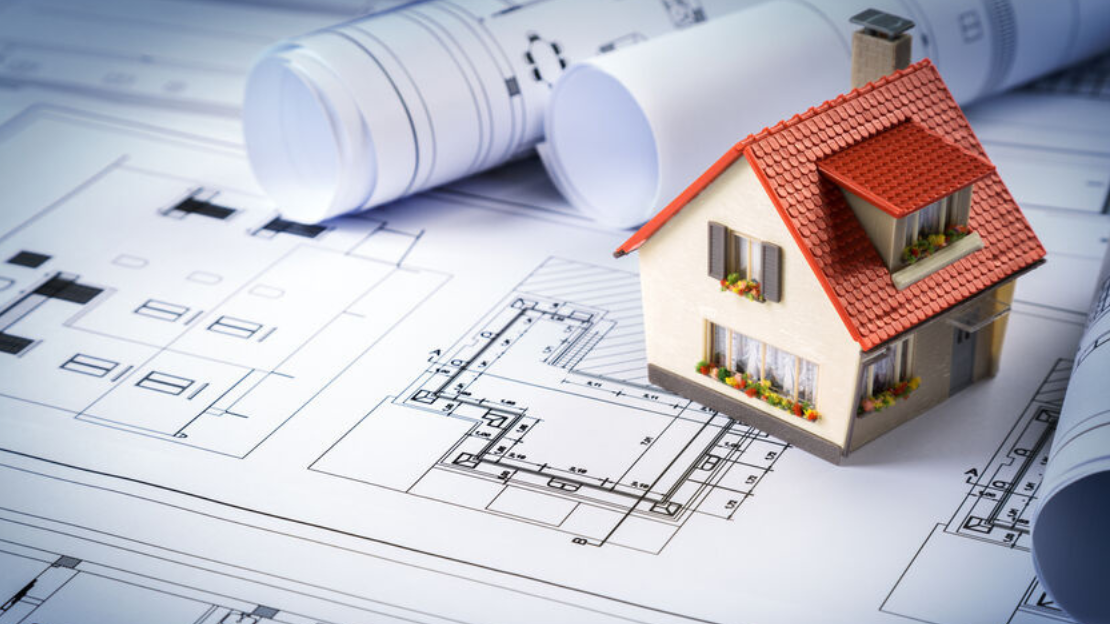9 Things To Remember When Renovating An Old House

Like how low-rise jeans, Tamagotchis, and flip phones are back in style, things from the past have been making a comeback with a certain twinge of nostalgia to them. Besides fashion and tech, that includes old homes too!
Most modern homes come with flat roofs nowadays, in comparison to the usual sloping roofs old homes have. While some prefer the former for its sleek look, a sloping roof has its undeniably classic Malaysian charm and the design allows for rainwater to slide right off.
Seeing as how old homes can be just as alluring as new ones and often in strategic locations, it’s no wonder that subsale homes are just as popular as new projects. Driving through the Klang Valley, you’d be surprised at the number of ‘new’-looking old homes in mature neighbourhoods.
Purchasing an old, subsale home comes with a twist, though. Due to the age and condition of the property, you may need to renovate and update it to meet your modern requirements. Various factors need to be considered during renovation too, like its structure, presence of leaks, and the cost of it all.
How to Start Renovating

Renovating your home begins with laying down the groundwork and inspecting the internal structure, such as the flooring, support pillars, roof beams, walls, plumbing, and wiring.
Old houses are highly likely to come with some wear and tear, so do your check with an experienced, trustworthy contractor to ensure no spots goes unturned.
Once you’ve done your thorough checks, it’s time to discuss what needs to be fixed, replaced, or renovated.
Things to Consider When Renovating An Old House
1. What is the cost and your budget?
An old house will need some renovation to make it comfortable to live in, but will it need every type of renovation? Once your contractor has inspected the structure and you’ve got a good idea of what you want to do, tabulate your costs and budget.
In this sense, it’s a case of needs vs. wants. Do you really need a spiral staircase with a tall entryway, or can you live without it and settle for something closer within your budget?
2. Work according to a schedule
We’re sure you can’t wait to move your things and settle in, but your house needs to be ready first before it can be a home.
Work together with your contractor on a renovation schedule, and don’t forget to leave some leeway for unforeseeable circumstances that may cause delays.

For example, weather conditions that could affect outdoor work, renovation on public holidays or weekends might not be allowed, or even the shortage of raw materials/manpower.
3. Do you need new wiring or pipes?
Unless the fixtures have been upgraded recently, the high chances are that the wiring and pipes will be the very same as the house was built with. In other words, they’re as old as the house.
It might be costly to put in new wires and pipes, but leaving them as is could lead to trouble for your home like power cuts, burst pipes, or worse – potential fires. It’s better to be safe than sorry!

4. Make sure there’s always one working bathroom
Ever run into the problem where nature calls, but there’s no bathroom in sight? It can be distressing and embarrassing to knock on your new neighbours’ doors to use theirs instead!
When it comes to renovation, especially while renovating bathrooms, always make sure there’s at least one bathroom that can be used, with a working flush and clean running water.
5. Do the floor tiles stay or go?
Part of the beauty of old houses lies in the design and quality of the materials used. Back then, high-quality tiles were easy to find and affordable too. Instead of completely retiling your home, take a look at the condition of the tiles and if they can still be salvaged.

If they’re still in good shape, all they need is some power-cleaning and polishing to restore their timeless beauty. You can also power-clean other floor types too, like parquet, polished concrete, marble, and linoleum.
6. Check the roof and any parts of the house you may overlook

You might not spend time up there, but the roof is just as important as the other areas of your home. Do a quick sweep of the condition of the roof tiles, and replace broken pieces immediately.
Additionally, check on any other ‘hidden’ areas in the house too, like the attic, the space underneath the stairs, plus any hollow walls or pillars to ensure they’re in clean, good condition with no surprises within.
7. Look for cracks, mould, rot, and damp corners
Having any of these in your home could affect your living conditions as they can pose health and safety risks. Fortunately, most are instantly detectable with the naked eye, but it doesn’t hurt to take a closer inspection.
Cracks: Most are harmless unless the crack follows a particular pattern. A structural crack can threaten the building’s structure and should be repaired immediately.
Mould: Thriving in dark, damp environments, the effects of mould are allergic reactions, respiratory issues, and breathing problems. Though mould usually occurs in areas close to water sources, it’s best to tackle it from the source to prevent it from happening.
Wood rot: Similar to cracks, wood rot can damage a building’s structure, making it dangerous to live in. Wood rot usually happens when the wood decays, turning it into dry rot, or by pests such as termites.
Damp corners: This is a major red flag that there’s something wrong with your plumbing, especially if corners far from water sources experience dampness. It can lead to further damage within the structure of your home and cause mould or fungi, so get those pipes checked.
[ArticleCallout]{ “title”: “How To Remove Mould And Mildew From Your Home Effectively<br><a href=\u0022https://www.propertyguru.com.my/property-guides/author/editorialmy\u0022></a>”, “excerpt”: “Finding spots in your home can be alarming. If you’re looking for a natural solution to remove mould, check out these tips. “, “link”: “https://www.propertyguru.com.my/property-guides/10-steps-remove-mould-mildew-from-your-home-effectively-24091”, “image”: “https://img.iproperty.com.my/angel-legacy/1110×624-crop/static/2020/03/mould-mildew-mainimage.jpg” } [/ArticleCallout]
8. Condition of fittings and panels
When one door closes, two windows open… But not if the windows are old and firmly shut! Ensure the windows, doors, and grilles in your house work well and lock tightly for you and your family’s safety.
If the fittings are rusty or in bad condition, replace them so that you can use them without any problems. Make sure that it functions smoothly within your space so that doors and windows can open freely without hitting any obstacles.
9. Do you encounter any pests while renovating?
The occasional cockroach or ant trail is fine, but if you uncover a nest of pests or frequently occurring ones, it’s time to take action and call the exterminators. If left untreated, certain pests can leave your home vulnerable, making all that hard renovation work wasted.
[ArticleCallout]{ “title”: “A Beginner’s Guide To Pest Control Malaysia<br><a href=\u0022https://www.propertyguru.com.my/property-guides/author/editorialmy\u0022></a>”, “excerpt”: “With proper knowledge, you can prevent, identify and remove pests – the right way.”, “link”: “https://www.propertyguru.com.my/property-guides/how-to-detect-repel-pests-in-your-home-10785”, “image”: “https://img.iproperty.com.my/angel-legacy/1110×624-crop/static/2019/01/12792895_ML.jpg” } [/ArticleCallout]
How To Change The Floor Plan Of Your Home
Depending on your needs, you might want to break down walls to create a bigger space, put up walls for more privacy, or even change the layout of rooms. That means adjusting your existing floor plan, which can come at some cost.
The first step is to create a floor plan that matches your lifestyle. If you love to cook or try new recipes, a big kitchen will complement your passion. Whereas, if you’re an aspiring yogi, open, airy spaces with greenery will be at the top of your list.

To change your floor plan, the help of a contractor or interior designer comes in handy. Not only do they have the necessary skills and experience for it, but they’re well-equipped with industry knowledge to help you better.
After all, it sounds easy to imagine a rooftop deck at the tallest point of your home, but it’s another thing entirely to build it. You need to factor in the building’s structure, environmental feasibility, and maintenance.
Altering your floor plan is permanent and non-reversible, and requires plenty of pre-planning. At best, design it around your foreseeable lifestyle to minimise any future changes. Or, be creative with the space so that it’s flexible enough to meet your needs if they should change.
Do You Need A Permit For Renovation In Malaysia?
In most cases, yes. The permit for renovation work in Malaysia is part of Section 79 in the Street, Drainage, and Buildings Act 1974 that notes,
79. (1) No person shall erect or cause or permit to be erected in any building any partition, compartment, gallery, loft, roof, ceiling or other structure without having the prior written permission of the local authority.
However, it does depend on what kind of renovation it is. Major changes such as modifying gates or border walls, installing additional awnings, or changing the property’s facade will require a permit.
When is a permit not needed? That’s for smaller jobs like painting, replacing air-conditioner units, changing wall fittings like windows and doors, or even installing ready-made fish ponds.

Besides a renovation permit, another thing to bear in mind is a renovation deposit. The deposit usually applies for strata-titled properties like condominiums and townhouses, and functions as a safety measure should any damages occur during the renovation.
Once your renovation is complete and if there are no damages to the property during that time, your renovation deposit will be refunded. Different properties may have various T&Cs and costs, so refer to your property’s management office for more.
[AskGuru][/AskGuru]
What Else Do You Need To Do Before Renovating?
Research, research, and more research! It doesn’t all have to be dry and technical like how to extend wiring and pipes, but can be fun like figuring out where to install your floor-to-ceiling windows for the coolest view, or how the arrangement of furniture and rooms can bring you better prosperity.
The best part about researching before renovating is that it prepares you for what’s to come – whether in budgets, materials, processes, etc. Above all, if you’re moving into your home with your partner, involve them in the process to make it even more fun and rewarding to see your happily-ever-after home come together.
Relevant Guides:



